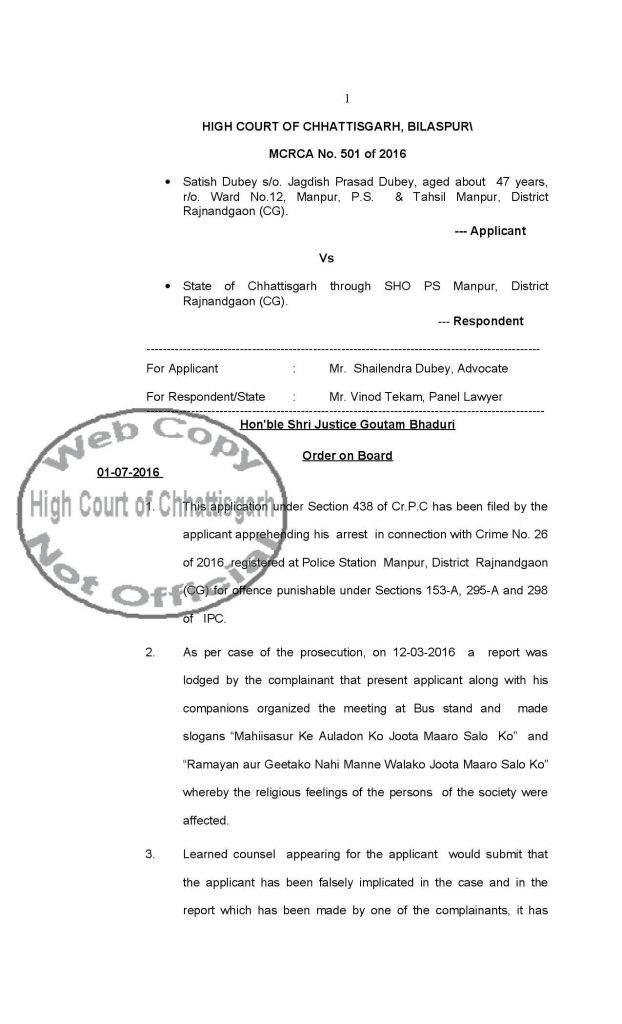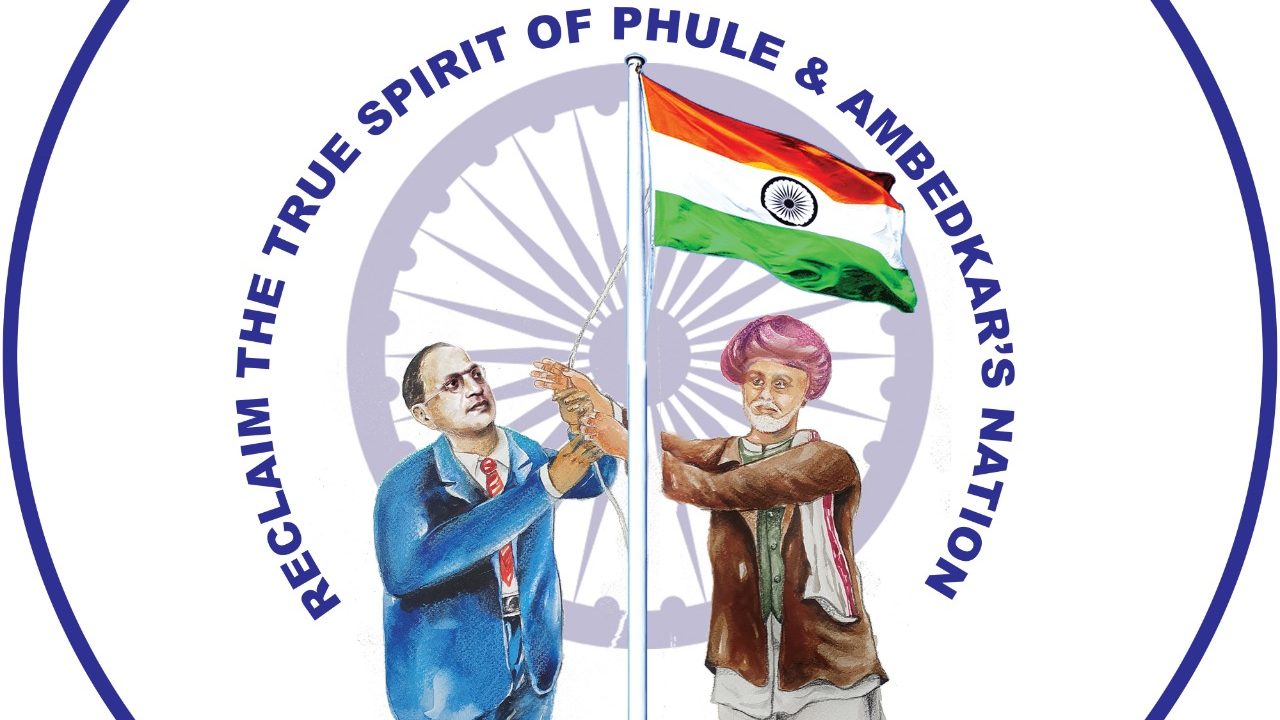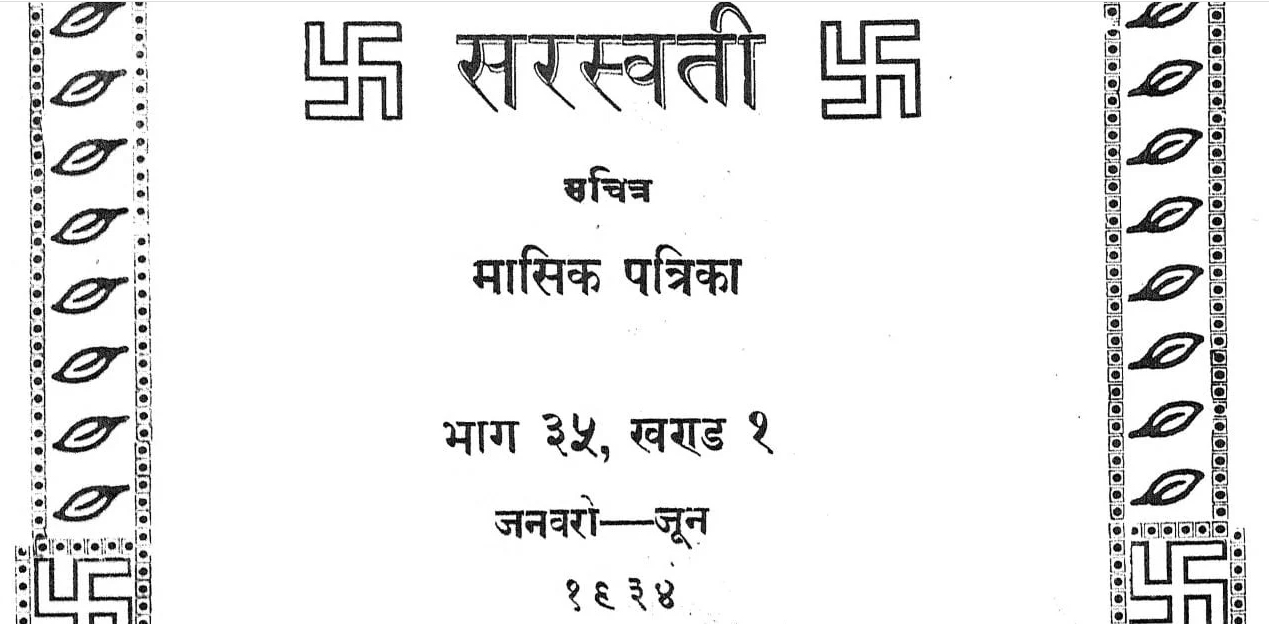“Tera hum encounter kardenge” has been the favourite line of the Chhattisgarh police for some time. The police issue this threat to poor Adivasis who have been previously caught on frivolous, often trumped-up, charges and then let off – because the poor Adivasi has been summoned to the police station and the station house officer needs his signature or thumbprint on a fabricated testimony to frame someone who has been a nuisance to them.
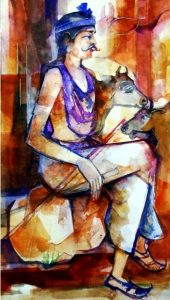
How does one become a nuisance to them? By raising awareness among the indigenous peoples about their rights to land, water, forests, and their own culture that goes back thousands of years – all of which are being trampled on. By acquiring a stature in society that the upper castes begin to resent for not being in keeping with the caste or tribal community to which you belong. If they can’t produce false witnesses to cook up a story against someone, they wait for another opportunity to pounce on you. Of late Facebook posts and WhatsApp messages have been providing them with ample such opportunities.
The indigenous peoples have been venting their anger through social media as part of the discourse kick-started by the Mahishasur movement against what they have increasingly come to see as cultural subjugation. The upper-caste leaders and their sympathizers in the police don’t mind digging up something you posted two years ago, as Vivek Kumar, a businessman from Manpur, in Rajnandgaon district, found out. He had made a comment on Facebook on the myth of Durga and Mahishasur in October 2014 when it became the hot topic after police in Delhi raided the Nehru Place office of FORWARD Press magazine.
Vivek Kumar’s case
Rajnandgaon is the home district of Chief Minister Raman Singh and his son Abhishek Singh represents the constituency in the Lok Sabha. Vivek Kumar belongs to the farming Kurmi community and his uncle, Arjun Singh Thakur, a Gond, is a lawyer and publishes the magazine Dakshin Kaushal. Both of them are active members of the Ambedkarite Party of India. Among the issues they have raised are the CRPF colonies springing up on Tribal lands and their patronage of liquor outlets.
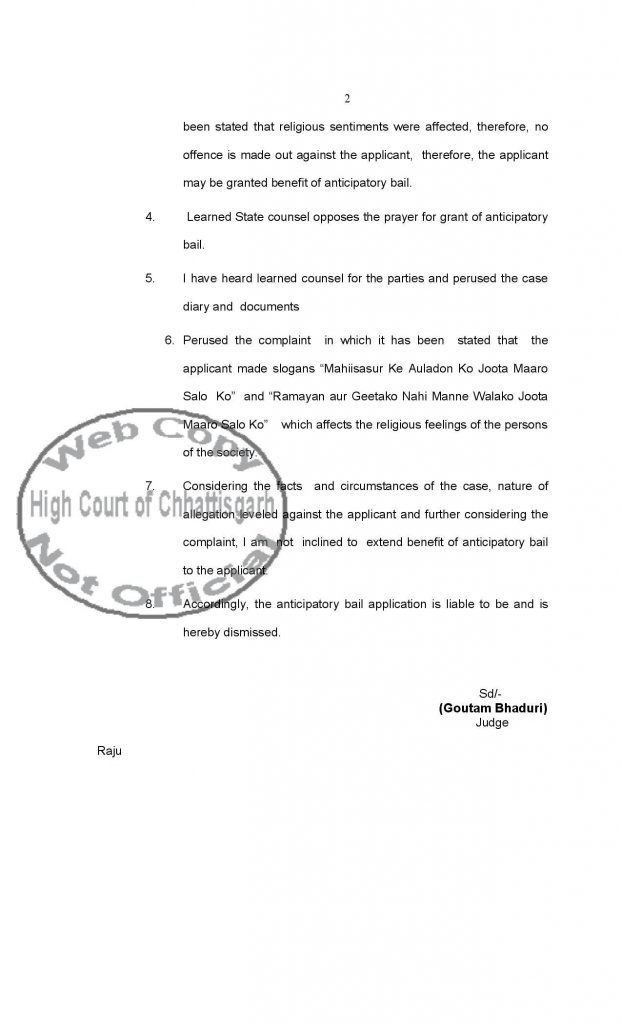
When the police arrested Vivek Kumar though, they were clearly not acting on their own. Going by the events of the last few months, the police have been quick to register FIRs whenever upper-caste groups have filed a complaint and bowed to the pressure whenever they have taken to the streets and called for the arrest of the accused. On the other hand, the police have either
completely overlooked the violent acts of the upper-caste groups or just filed an FIR and let the accused roam free. These upper-caste groups are made up of people who are also members and supporters of either the party in power, the BJP, or of the Congress, the only other party with a significant presence in the legislative assembly.
Vikas Khandekar’s case
Rajnandgaon runs along the western border of Chhattisgarh and adjoins Maharashtra and Madhya Pradesh. Further up north along the state’s border with Madhya Pradesh is Mungeli. Here, Vikas Khandekar was arrested on October 5 for reposting on Facebook a message that had critiqued the Durga-Mahishasur myth. Khandekar is the president of the Satnami Samaj.
When news about the Facebook post spread, the Sarvadaliya Manch organized a protest march to put pressure on the administration to act against Khandekar, which eventually turned violent. Incidentally, the supposedly all-party (‘Sarvadaliya’) forum is an initiative of the RSS and the Vishwa Hindu Parishad that also brings together upper-caste leaders from the Congress and other small parties. These protesters garlanded the Satnamis’ sacred “Jaitkhamb” with shoes and pelted stones at his house when his wife and his little children were indoors.
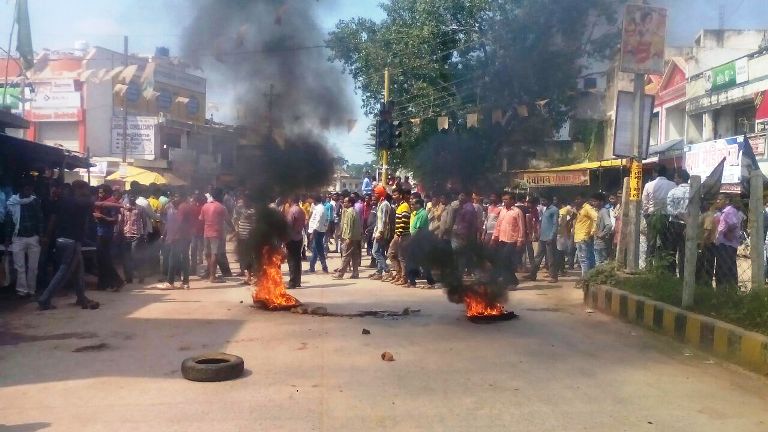
The police filed an FIR but cited relatively minor, bailable offences, for instance, “rioting” as mentioned in Indian Penal Code (IPC) Section 147. The Satnami community and their civil society supporters wrote to the superintendent of police and the collector urging them to book the violent protesters under the Scheduled Castes Tribes (Prevention) Act but there was no response. Some of them even met the inspector general. When FORWARD Press spoke to Neethu Kamal, superintendent of police, Mungeli, she denied that the protesters had desecrated a Satnami sacred site but eyewitnesses tell a different story. According to the eyewitnesses, the sub-divisional officer of police O.P. Chandel had led the protesters who desecrated the Jaitkhamb.
The Satnamis make up the largest constituent of the Scheduled Castes in Chhattisgarh. They have an especially large presence in Mungeli. Of late, they have been coming together and holding peaceful marches, for example, on the day when Thakurs of the area killed their founder Guru Ghasidas. Vikas Khandekar has led these marches. The Thakurs and the other upper castes haven’t taken kindly to this show of unity and strength. Most recently, one Dr Abhiram Sharma had a portrait of Guru Ghasidas painted on the perimeter wall of his farmhouse, notably just above a sewage drain. While Vikas Khandekar remains in jail even today and has been denied bail by the lower courts, Dr Abhiram Sharma got bail as soon as the FIR was filed against him.
Dr George Lakra’s case
Jashpur is a district in the northeast of the state where it shares its border with Jharkhand. There, in Pathalgaon, George Lakra, a medical doctor at the government hospital was arrested on October 13 for forwarding to a WhatsApp group a message that was titled “Why is only Ravana’s effigy burnt?” Within an hour of his sharing the message, complaints had been filed simultaneously in four different stations, Bagaicha, Kunkuri, Jaspuri and Pathalgaon, and an hour later the FIR was ready.
Dr Lakra, a general physician, worked at the government hospital and oversaw 12 government medical programmes. There are 13-14 doctors at the hospital, 10 of whom, including Dr Lakra, are Adivasi Christians. A quarter of the district’s population is Adivasi Christian. The WhatsApp group in which he shared the message was also an initiative of the health department. Lakra’s wife and son teach in a local college, while his daughter is studying to be a doctor. The FIR cited Article 295 (A) of the IPC, under which he could be arrested without a warrant. So, he was picked up from his house and has been in jail ever since. As an acquaintance of Dr Lakra narrated to me on the phone the sequence of events from a lonely spot outside his house (he had stepped out of the house because he feared the rumour would spread that he had been speaking to a journalist), it felt like he was “living under military rule”.
M. Dhiwar’s case
Until recently, in Kurra, Dharsiwan, near the state capital Raipur, it felt like there was no rule. The upper-caste hoodlums didn’t need the police here. One Christian Adivasi, M. Dhiwar, was beaten to death when he refused to eat prasad offered to the goddess/Devi. Initially, the police tried to make up a justifiable reason for Dhiwar’s death – that the young man was caught watching girls change for a dance performance at a Durga Puja function. That’s when the members of his community sprung into action. They approached the director general of police and warned him that they would have to knock on the doors of the High Court and National Human Rights Commission if the police didn’t act. This forced the local police to launch an investigation. While some people have been arrested, there is still the fear among Dhiwar’s friends and relatives that the police could produce weak evidence against the accused and let them off scot-free. Their fear is not without basis, for while speaking to FORWARD Press, Town Inspector Aleem Khan still appeared convinced that this was indeed a case of a drunk boy watching girls change and being beaten up.
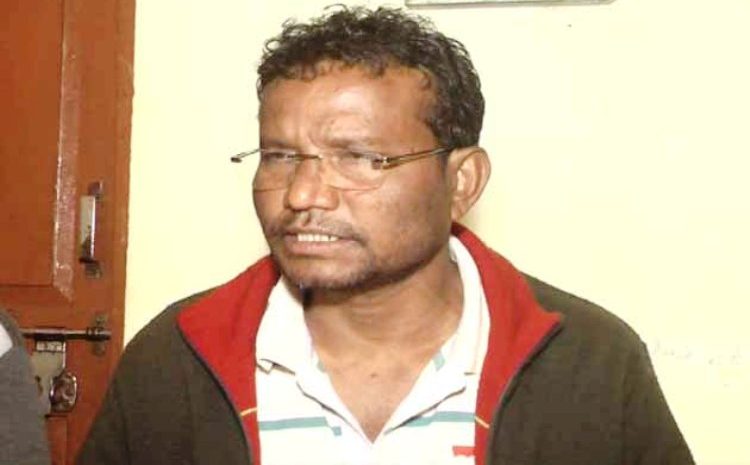
Manish Kunjam’s case
In the southeast, in Sukma, it was a former CPI MLA Manish Kunjam who had come under attack for sharing a post that had sought to retell the Durga-Mahishasur myth from a Adivasi perspective – that the Brahmins had sent Durga to deceitfully kill Mahishasur, who was a Santhal King, and that even today soil from the house of a sex-worker is used in making Durga idols. The police registered an FIR against him after a youth Congress leader from Bastar filed a complaint and then the Dharmasena followed suit in Sukma. The Sarva Hindu Samaj organized protests and there was a massive deployment of police personnel. The atmosphere became so tense that eventually, the district administration had to prohibit people from assembling under Section 144 of the IPC.
Kunjam, who is also the national president of the Adivasi Mahasabha, has a large support base. Tribal communities rallied behind him. The Koya Samaj issued a statement saying Kunjam did not insult gods or goddesses of other communities; he simply said he commemorated (worshipped) Mahishasur. Kunjam said that the FIR against him had been registered because he had written to the prime minister about the corruption in the Jilla Nirman Samiti (district building committee) and an investigation had been ordered.
More recently, 30-35 youths, allegedly affiliated to Hindutva organizations and police supporters, barged into a press conference at the CPI office in Jagdalpur while Kunjam was addressing a press conference and broke the furniture even as the police personnel who arrived stood there and watched. Kunjam had called the press conference in response to the burning of effigies of journalists and activists, including Kunjam’s, by the police in Jagdalpur and the CBI’s investigation into the burning of Adivasi homes by the Salwa Judum’s special police officers in 2011.
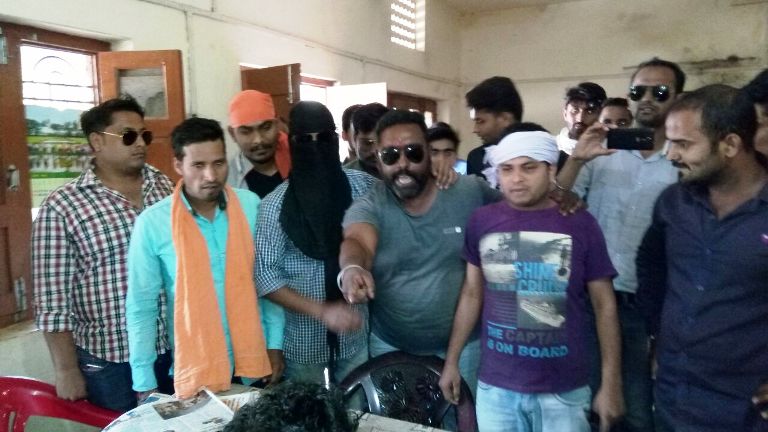
The youth who barged into the press conference office demanded that Kunjam apologise for sharing the WhatsApp message on Durga and Mahishasur. Earlier, when the furore over the WhatsApp message refused to die down, Kunjam had said he had not written the post but he did agree with some of the things mentioned in the post. “I belong to Mahishasur’s lineage. Just as the RSS and members of the Sarva Hindu Samaj are upset with the comments about their gods and goddesses, we are also upset with the false portrayal of Asurs in the [Hindu] scriptures.”
https://www.youtube.com/watch?v=cN2iLQgWUdA
S.R.P. Kalluri, the Inspector General of Police (IGP), Bastar, had then invited Manjhis and Chalkis of the various Tribes to a grand feast at the Danteswori Mandir premises in Dantewada, where, according to a newspaper report, “they declared in one voice that Adivasis are not the descendants of Mahishasur”. Kunjam said, “The tradition of Manjhi-Chalki began when the kings were ruling over this region. It’s only about 150-200 years old. They are not elected. They are appointed by the tehsildar and usually the post remains within a family … This is all sponsored.”
Manpur savarna protests
Back in Manpur, in March, upper-caste Hindu youths had taken out a demonstration demanding Vivek Kumar’s arrest and shouted slogans abusing Mahishasur and Adivasis:
Mahishasur (Bhainsasur) ki auladon ko, jutey maro salon ko’
(Thrash descendants of Mahishasur with shoes)
‘Ramayan-Gita ko nahin manne walon ko, juta maro salon ko’
(Thrash with shoes those who do not have faith in Ramayan-Gita)
‘Abujhmadiyon hosh mein aao’
(Residents of Abujhmadh [a tribal-dominated region in Bastar, Chhattisgarh], wake up)
‘Rakshason ke auladon ko, jute maron salon ko’
(Thrash descendants of demons with shoes)
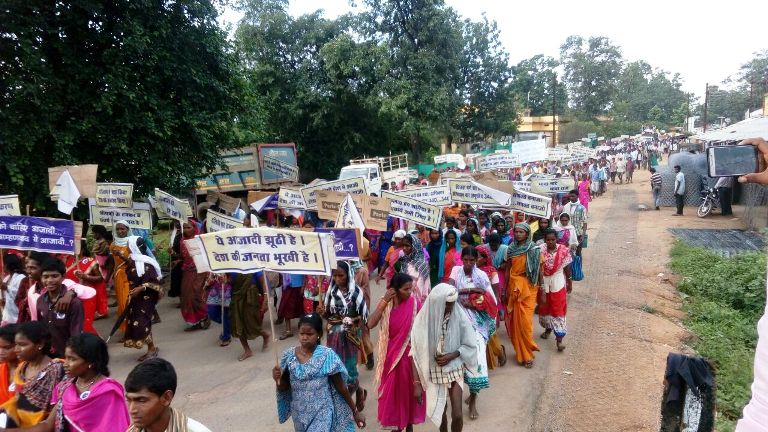
The police reluctantly registered an FIR against the youths almost a month and a half after the incident and that too after Adivasis had taken to the streets on four different occasions and submitted written complaints to the local administration. The fourth demonstration involved some 10000 people. The youths then applied for anticipatory bail but the courts, including the Chhattisgarh High Court, turned down the plea. For almost 8 months the police didn’t make any arrests. Finally, on 9 November, DSP Akash Rao, said that the police had picked up one of the youths, Satish Dubey. Inspector Mukesh Yadav, in charge of the police station where the FIR was registered, confirmed that Satish Dubey had been arrested.
But Vivek Kumar spent two months in jail. None of the lower courts granted him bail. He was freed when he finally appealed to the High Court. Vikas Khandekar and George Lakra too haven’t been granted bail by the lower courts. They are still in jail.
No wonder, Kunjam concluded, “Bastar is a living proof of the fact that the police in this country is in the hands of the upper castes.”
For more information on Mahishasur, see Mahishasur: A People’s Hero. The book is available both in English and Hindi. Contact The Marginalised, Delhi (Phone: 9968527911).
Or, find the book on Amazon: Mahishasur: A People’s Hero (English edition), Mahishasur: Ek Jan Nayak (Hindi edition)
